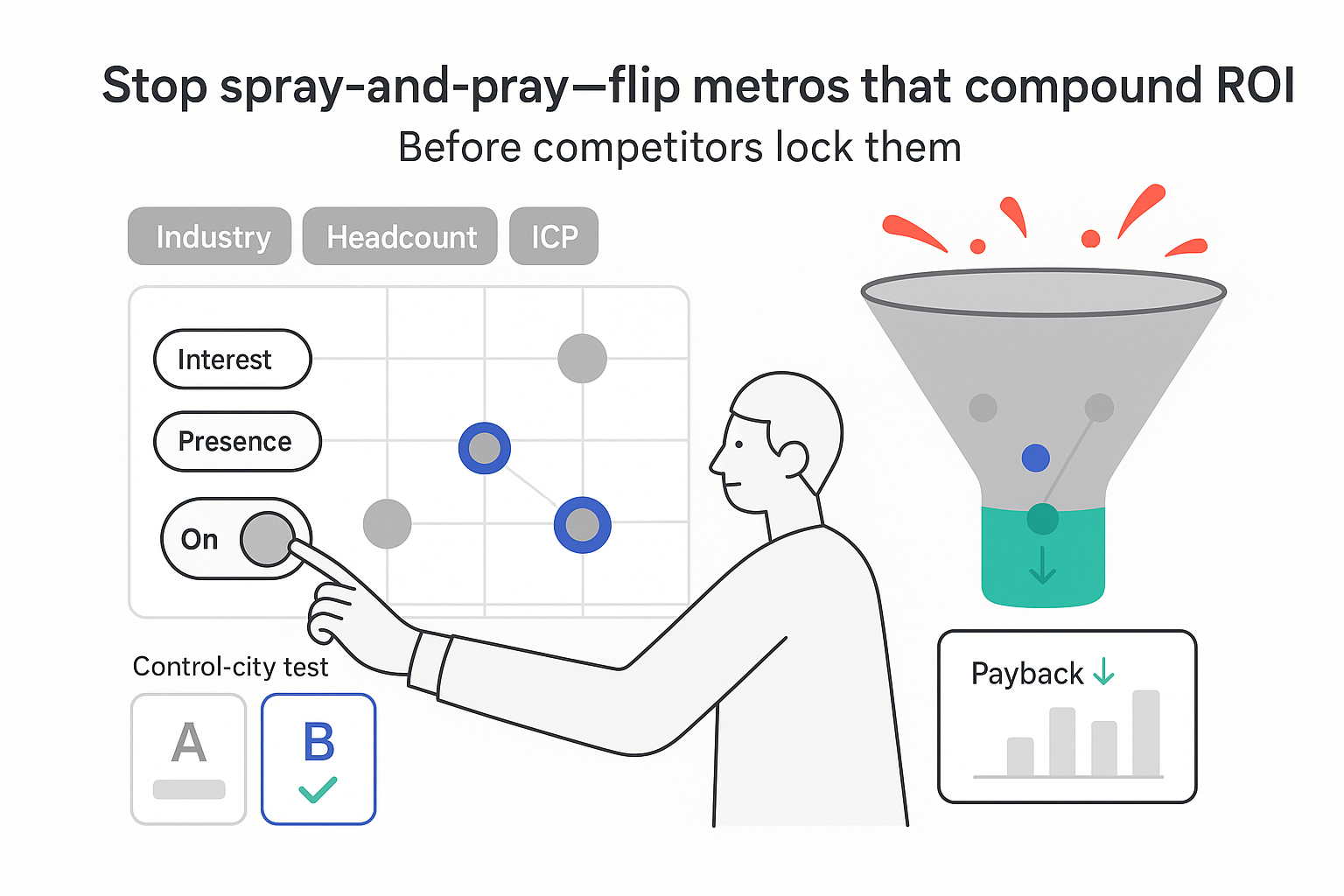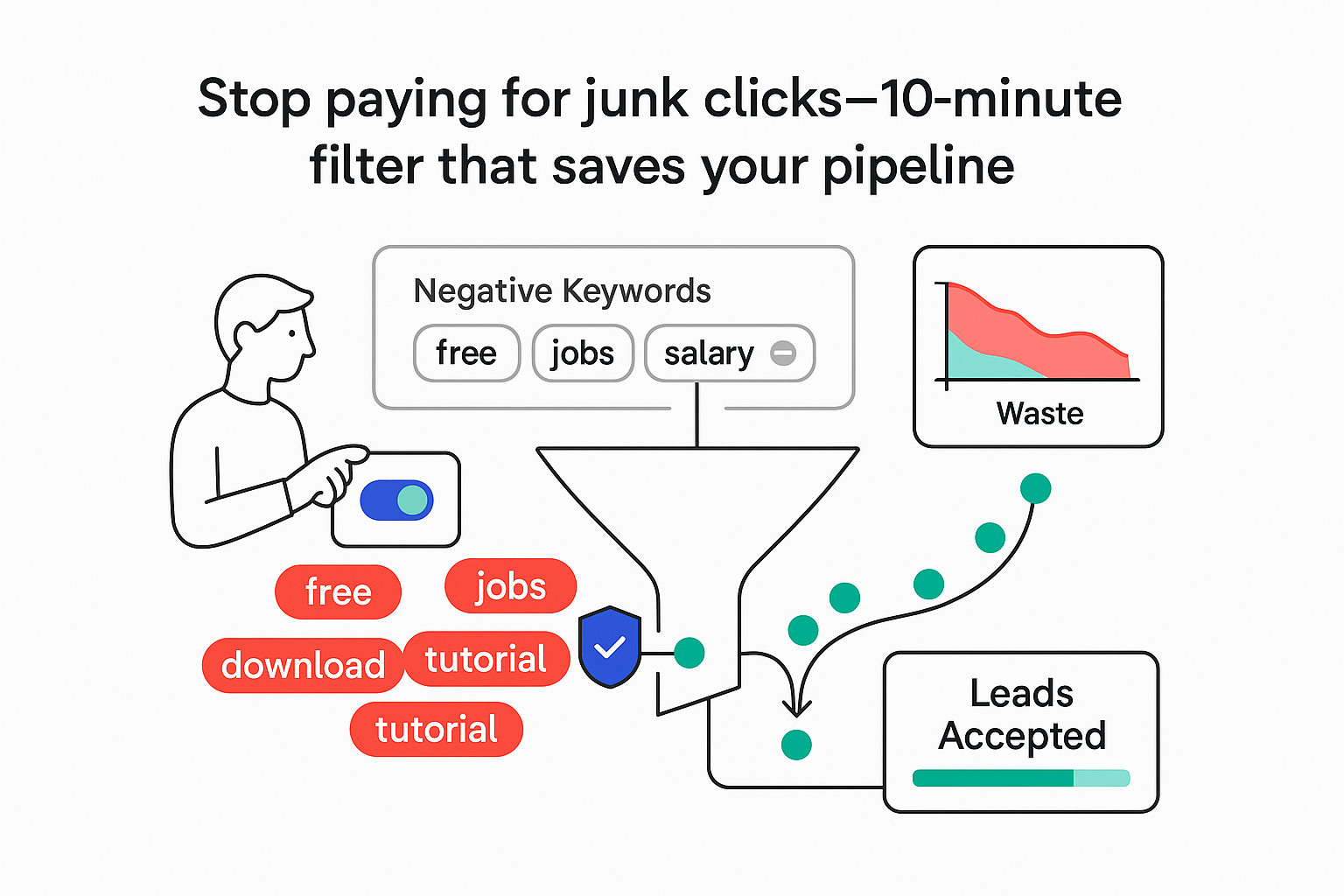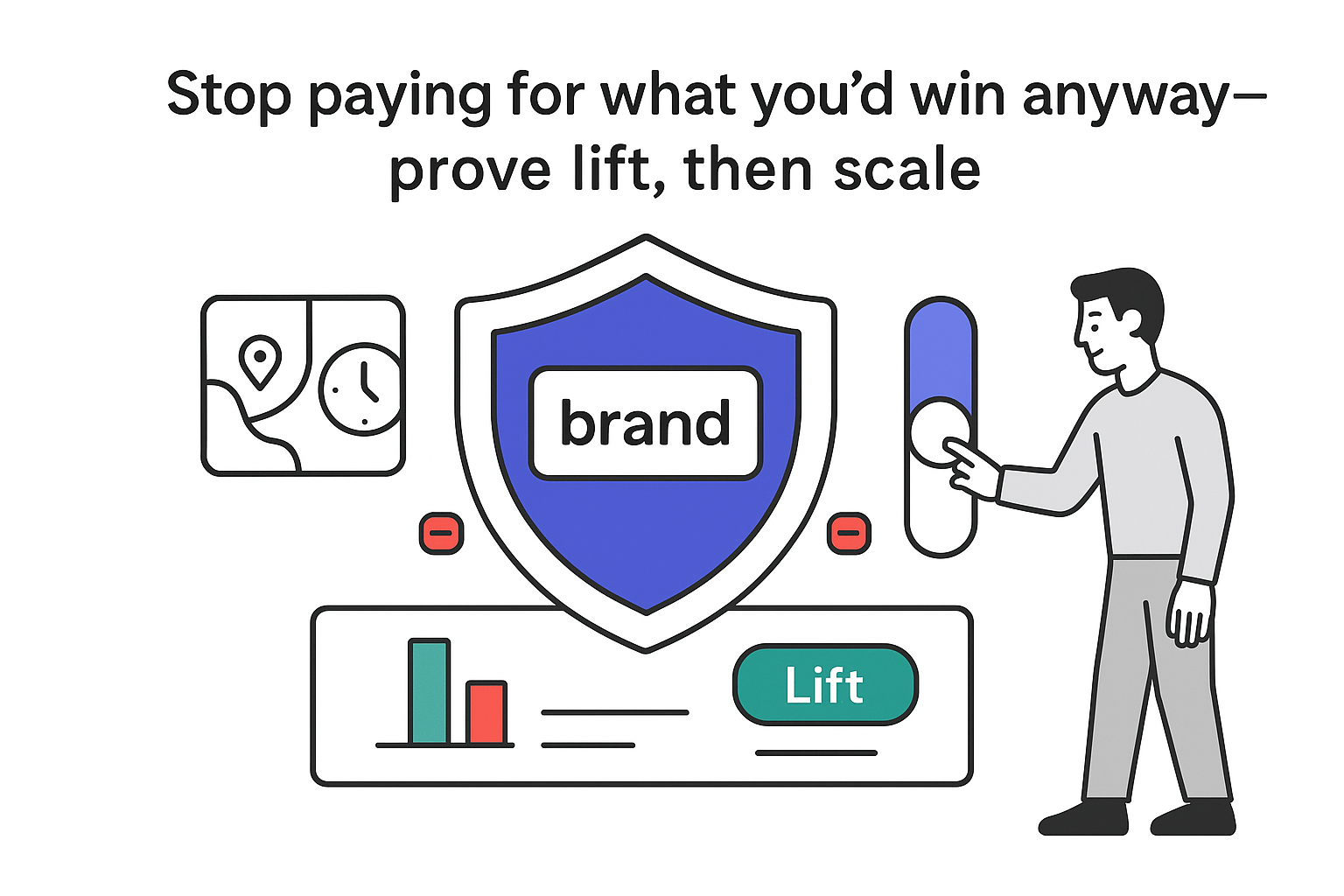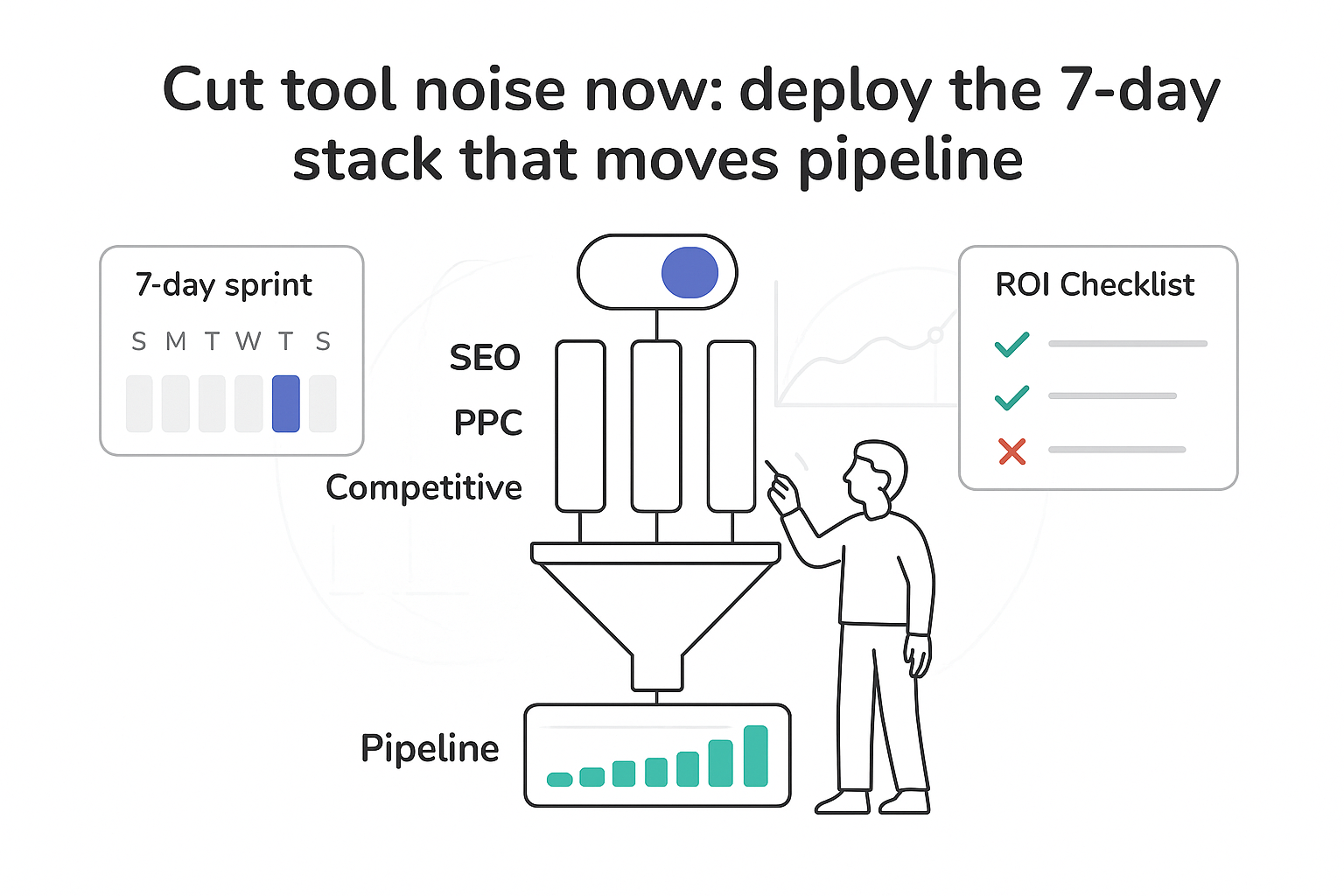You are weighing SEO against Google Ads because pipeline, margins, and time all matter. If you lead a B2B services firm, you are not looking for theory. You want a clear, low-drama way to pick a lane - or blend both - without burning months or budget. Here is how I make that call, what the math actually looks like, and a simple way to test it without guesswork.

SEO vs Google Ads: my quick recommendation
I start with the decision, then back into the detail.
Simple flow:
- Need pipeline in under 30 days? Choose Google Ads.
- Average contract value (ACV) above 10k and a 6–12 month horizon? Choose SEO.
- Aggressive growth and flexible budget? Run both, sequenced.
Context that changes the call:
- Sales cycle:
- Under 60 days - Ads first, CRO in parallel; start bottom-funnel SEO, but do not expect it to carry the quarter.
- 60–180 days - Hybrid; Ads capture demand while SEO builds the base.
- Over 180 days - SEO-led; Ads to harvest in-market intent and cover gaps.
- ACV:
- Under 10k - Tight targeting in Ads; lean, bottom-funnel SEO.
- 10k–50k - Hybrid with SEO moats and retargeting.
- Above 50k - SEO authority plus strategic Ads at moments of intent.
- Budget flexibility:
- Fixed, small - SEO foundation; selective exact-match Ads.
- Flexible - Both, with scale/cut rules at 45 and 90 days.
- Domain strength:
- New or weak - Ads plus early PR/content seeding.
- Mid-strength - Hybrid with SEO clusters.
- Strong - SEO expansion; Ads for coverage and experiments.
Why this order: most teams need wins now, but the firms that pull ahead stack quick wins on top of compounding assets. Ads validate and gather data. SEO compounds and lowers acquisition costs over time. ACV thresholds and timelines are directional - unit economics drive the real decision.
How the channels actually differ
SEO earns visibility by ranking in organic results through content quality, relevance, and site health. Google Ads buys visibility through an auction where your bid and ad quality determine placement. One is algorithmic ranking. The other is a paid auction. For Google’s official overview of organic search, see how Google organic search works and find tips for getting started here.
Important reminder straight from Google: paid traffic does not improve organic rankings; there is no direct ranking boost from ads. Ads can surface insights you apply to SEO, but that is it.
What SEO means in B2B services:
- Technical: fast load times, clean architecture, mobile readiness, structured data, error-free crawling (use Search Console and a crawler to spot blockers; address issues like What Is Duplicate Content In SEO? How to Find It and Fix It).
- On-page: pages mapped to real queries, smart internal links, clear headings, schema when helpful, and meta text that earns clicks. See Use Search Intent to Guide Your SEO Strategy.
- Content: topic clusters linking thought leadership to practical pages - use cases, industry pages, pricing guidance, and bottom-funnel landing pages that match service intent. For a durable foundation, see SEO Fundamentals Still Apply: The 4 Rs Framework.
High-yield SEO targets:
- Service + industry pages: “SOC 2 compliance for healthcare.”
- Pain points: “How to reduce churn in managed IT.”
- Comparisons: “Vendor A vs Vendor B for ISO audits.”
- Buyer enablement: implementation timelines, ROI guidance, migration guides.
What Google Ads does best:
- Put you in front of in-market intent now via keyword auctions.
- Core levers: bids, Quality Score (ad relevance, expected CTR, landing experience), and Ad Rank (bid × quality/context).
- Targeting: exact/phrase/broad with negatives, remarketing, customer lists, demographics, and in-market audiences. Watch out for wasteful geo settings - see Costly Location Targeting Settings in Google Ads.
- Speed and control: test messages the same day, pause losers, push winners. But when budget stops, traffic stops.
High-intent B2B examples:
- Exact: “SOC 2 audit service,” “managed detection and response pricing,” “Salesforce CPQ implementation.”
- Phrase: “IT helpdesk outsourcing,” “ISO 27001 consulting.”
- Broad (only after learning) with strong negatives to prevent waste.
Cost, math, and ROI realism
I anchor channel choice to CAC, payback, and LTV/CAC - not clicks or rankings.
SEO cost model (typical B2B ranges):
- Content: 750–1,200 per in-depth page, including research and editing.
- Tools and tech: ~200–400/month for SEO suites and crawling.
- Links/digital PR: 300–800 per earned mention (quality over volume).
- Dev/design: one-time fixes for speed, UX, and schema.
Google Ads cost model (typical B2B search):
- CPCs often range from the high single digits to 40+ in competitive niches (security, legal, financial tend to be higher; check your market). Industry benchmarks suggest PPC can return about a 200% ROI with strong execution - see Businesses typically see a 200% return on investment.
- Conversion rate (CVR to lead) varies with intent and landing quality; bottom-funnel pages often convert ~3–10%.
- CPA math: CPA = CPC / CVR. Example: CPC 18, CVR 4% -> CPA 450 per lead.
- SQL/CAC math: If 35% of leads become SQLs, cost per SQL = 1,286 (450 / 0.35). If 20% of SQLs close, CAC = 6,430 (1,286 / 0.20).
LTV and payback:
- Example: 20k ACV at 60% gross margin -> 12k year-one gross profit. With 6k CAC, LTV/CAC = 2:1. That can work if payback is under ~9 months and renewal/expansion improves lifetime value.
- SEO tends to drop CAC over time as rankings and click share grow. Ads keep CAC tied to CPCs and conversion rates.
Quick calculators I use:
- Ads: Target CPC = Target CPA × CVR. Break-even CPA = (ACV × gross margin × close rate) ÷ (leads per deal). Set a target LTV/CAC ≥ 3:1 for comfort, then test into it.
- SEO: Monthly ROI = (New organic revenue − Monthly SEO cost) ÷ Monthly SEO cost. Track conversion by page group (bottom/mid/top funnel) and attribute assisted revenue, not just last-click wins.
Pros and cons snapshot
- SEO: lower CAC over time and compounding traffic, but slower to start and sensitive to algorithm shifts.
- Ads: higher initial CAC and spend dependency, but instant data, fast testing, and clean budget control.
Speed now vs durability later
Speed
- Google Ads: traffic within hours of launch; meaningful signal in 2–4 weeks if you get enough clicks.
- SEO: first movement in 3–6 months; compounding in 6–12 months and beyond.
Durability
- SEO creates defensible, repeatable visibility. High-performing pages can drive visitors for years with periodic refreshes.
- Ads pause and the faucet closes - great for launches, events, and short windows, but not a replacement for a steady organic base.
Risks and how I blunt them
- SEO: algorithm updates and changing SERPs. I focus on useful, original content, fast UX, and diversified clusters to avoid single-page dependency. For context on evolving behavior, see How AI is Changing Search Behavior.
- Ads: auction inflation and rising CPCs. I improve Quality Score, tighten match types, add smart negatives, and upgrade landing conversion rates.
Foundational quick wins
- Control your branded SERP: sitelinks, ratings, and brand terms coverage so competitors do not siphon demand.
- Upgrade conversion paths: faster pages, simpler forms, relevant proof, and event tracking that ties to opportunities. For phone-heavy local funnels, use DNI so you do not sabotage your local SEO.
- Retargeting: bring back evaluators with case-driven proof (case studies, short explainers). Consider display for reach via the Google Display Network.
Targeting by funnel stage
Match channel strengths to intent instead of forcing one channel to do everything.
SEO focus
- Top of funnel: informational clusters (e.g., “How SOC 2 maps to ISO 27001,” “What is MDR vs MSSP”).
- Mid funnel: use cases and industry pages (“Pen testing for fintech,” “RevOps consulting for SaaS”).
- Bottom funnel: comparison and service landing pages (“Vendor A vs Vendor B,” “PCI compliance audit services,” “Data migration consulting pricing”).
Google Ads focus
- Bottom funnel first: exact and phrase on buying terms - “services,” “consulting,” “pricing,” geo qualifiers if relevant.
- In-market and custom segments: build audiences from CRM lists, site visitors, and relevant categories mirrored into Ads where allowed.
- Negatives: block jobs, tutorials, free, DIY, student intent, and adjacent tech terms that do not convert.
- Remarketing: re-engage mid/bottom-funnel visitors with proof-heavy assets and event-specific nudges.
Conversion directionality
- Top of funnel: low direct demo rates; lean on newsletter and guide signups.
- Mid funnel: moderate trial or consultation requests when pages speak to a segment.
- Bottom funnel: highest conversion to SQL and shortest time to meeting.
Running a hybrid without waste
I call this visibility stacking: occupy both ad slots and organic slots for the terms that matter.
How I run it
- Use Ads to validate keywords, angles, and offers. When a term is profitable, build or upgrade the SEO page for it and link supporting articles. Keep the ad live while organic climbs.
- Use SEO insights to expand Ads. Pull top organic queries from Search Console and duplicate winning messages and objections into ad copy and extensions.
- Brand defense: bid on brand terms while building organic dominance to protect against competitor conquesting.
- Demand capture + retargeting: harvest bottom-funnel search; re-engage on YouTube/Display with proof; send traffic to focused, fast landing pages.
Guardrails I set
- Attribution sanity: import offline conversions from CRM to Google Ads, tag with UTMs, and review assisted conversions so credit reflects reality.
- Cannibalization control: exclude brand in non-brand campaigns; use negatives to keep Ads from chasing clicks you already own organically.
- Scaling rules: increase budgets 20–30% on ad groups hitting CAC targets for at least two weeks; pause ad groups that miss CPA targets by 50% after sufficient data.
A 90-day test I trust
Budget ranges depend on CPCs and ACV, but I work backward from unit economics. Pilots often land between 5k and 20k/month to hit statistically useful volume; the real constraint is clicks and conversions, not spend for its own sake.
Simple split
- 60% to search Ads (demand capture and remarketing)
- 25% to SEO (bottom-funnel content and technical fixes)
- 15% to CRO and analytics
KPIs I track
- Ads: cost per SQL, meeting rate, win rate, CAC, payback.
- SEO: indexed pages, rankings for target terms, organic SQLs, assisted conversions.
Decision thresholds
- Give new ad groups 300–500 clicks or 30+ conversions before declaring winners/losers (fewer can mislead).
- Kill any ad group with CPA above target by 50% after sufficient data; reallocate to proven terms.
- For SEO, refresh pages that show promise; retire or repurpose content that fails to move after two meaningful refresh cycles.
FAQs
Do Google Ads improve SEO?
No. I have not seen Ads directly boost rankings, and Google states there is no direct ranking impact. Ads can reveal high-converting queries and messages you can apply to SEO content.
How long until SEO works for B2B?
I plan for first movement in 3–6 months, with compounding gains at 6–12 months as clusters mature and links accrue. Timelines shorten with strong domain strength and clear bottom-funnel intent.
What budget should I start with?
I work backward from ACV, margin, close rate, and target LTV/CAC. Pilots often sit between 5k and 20k/month depending on CPCs and goals, but the key is buying enough clicks to learn and enough time to see second-order effects (remarketing, assisted conversions).
When should I choose only Google Ads?
New domains, urgent pipeline gaps, product launches, short event windows, or when I need clean data on what converts before investing in a content program.
When should I choose only SEO?
Long sales cycles, higher ACV, and a content-moat strategy where I can out-teach competitors. This fits when I want to reduce paid dependency and can invest for a 6–12 month payoff.
Can I run both without cannibalization?
Yes. I set negatives to avoid chasing branded clicks I already own, apply clear brand rules, and use attribution guardrails (UTMs, CRM imports, assisted-conversion views) so credit flows where it should.
Final note: whatever I choose, I tie it to deals, not clicks. I let Ads surface fast insights. I let SEO build the engine I can rely on. And I keep the math honest - because the math will keep me honest too.







.svg)